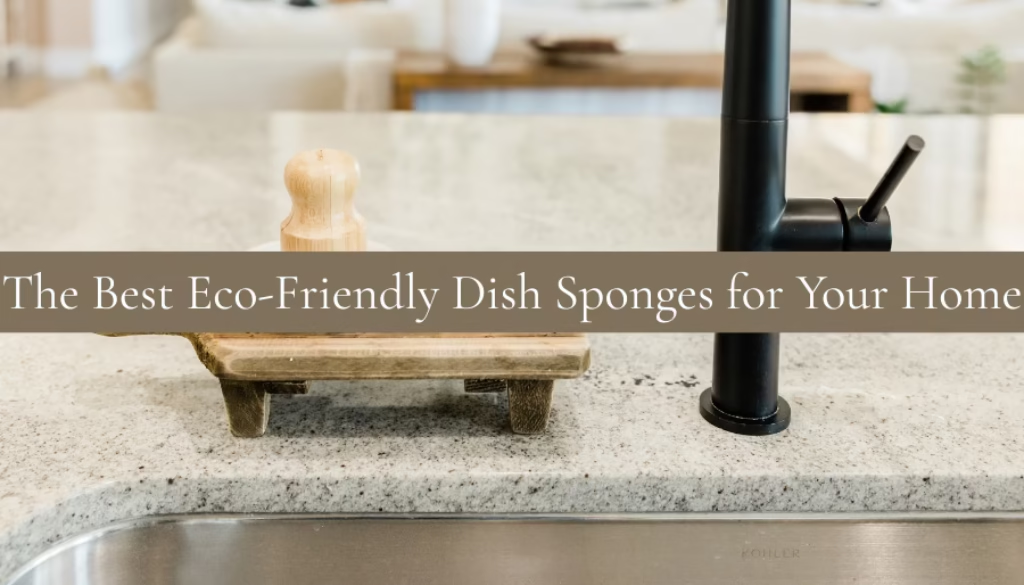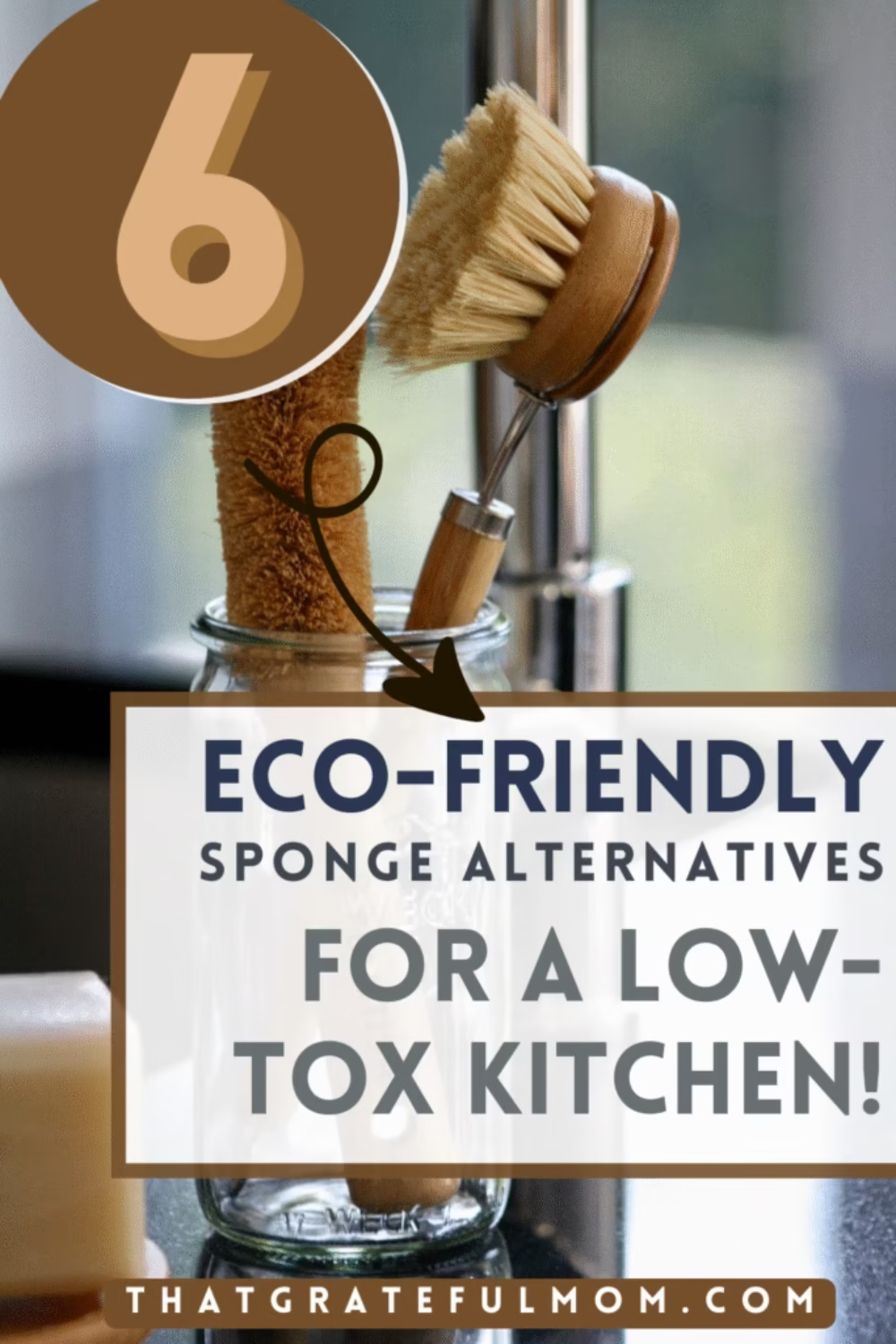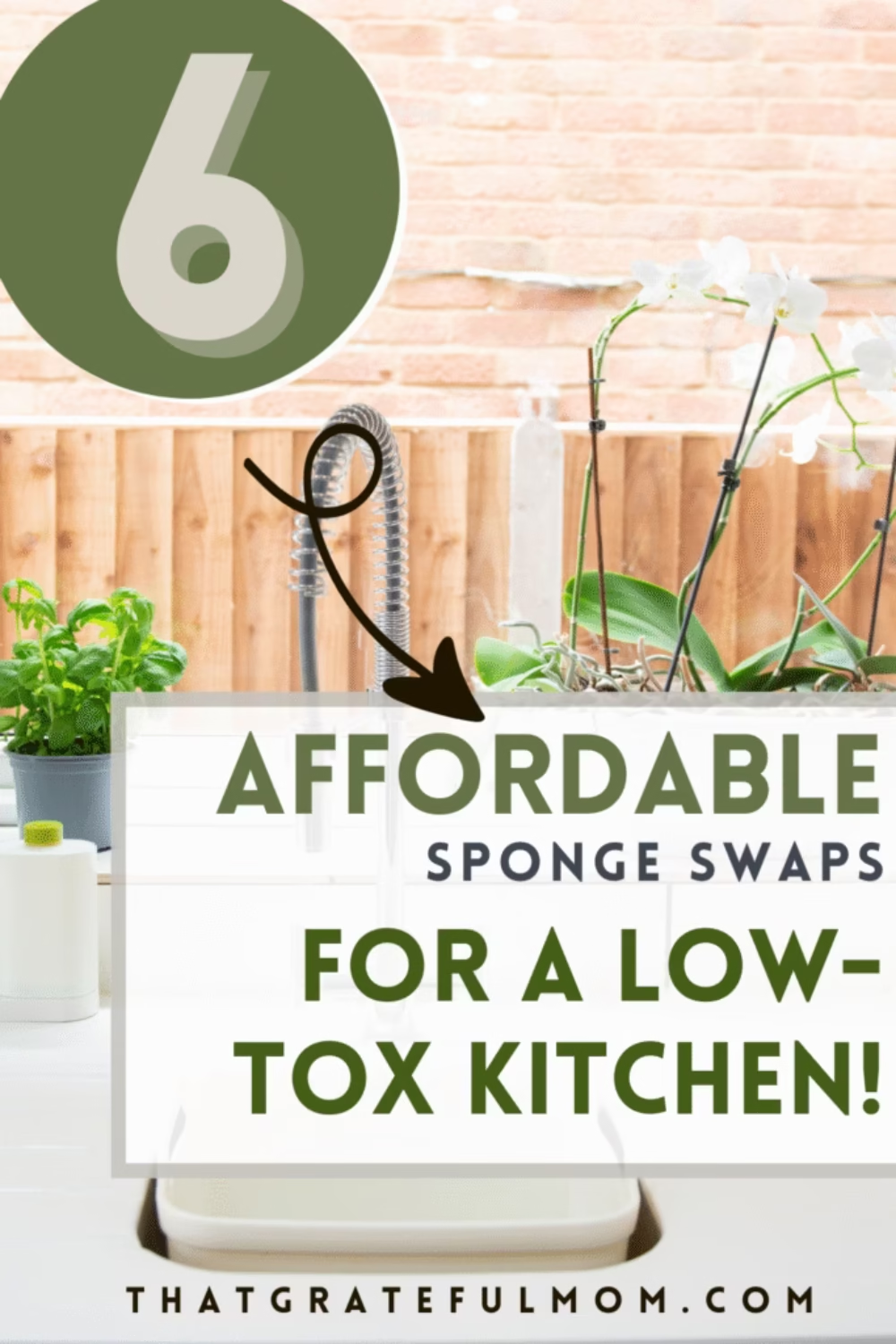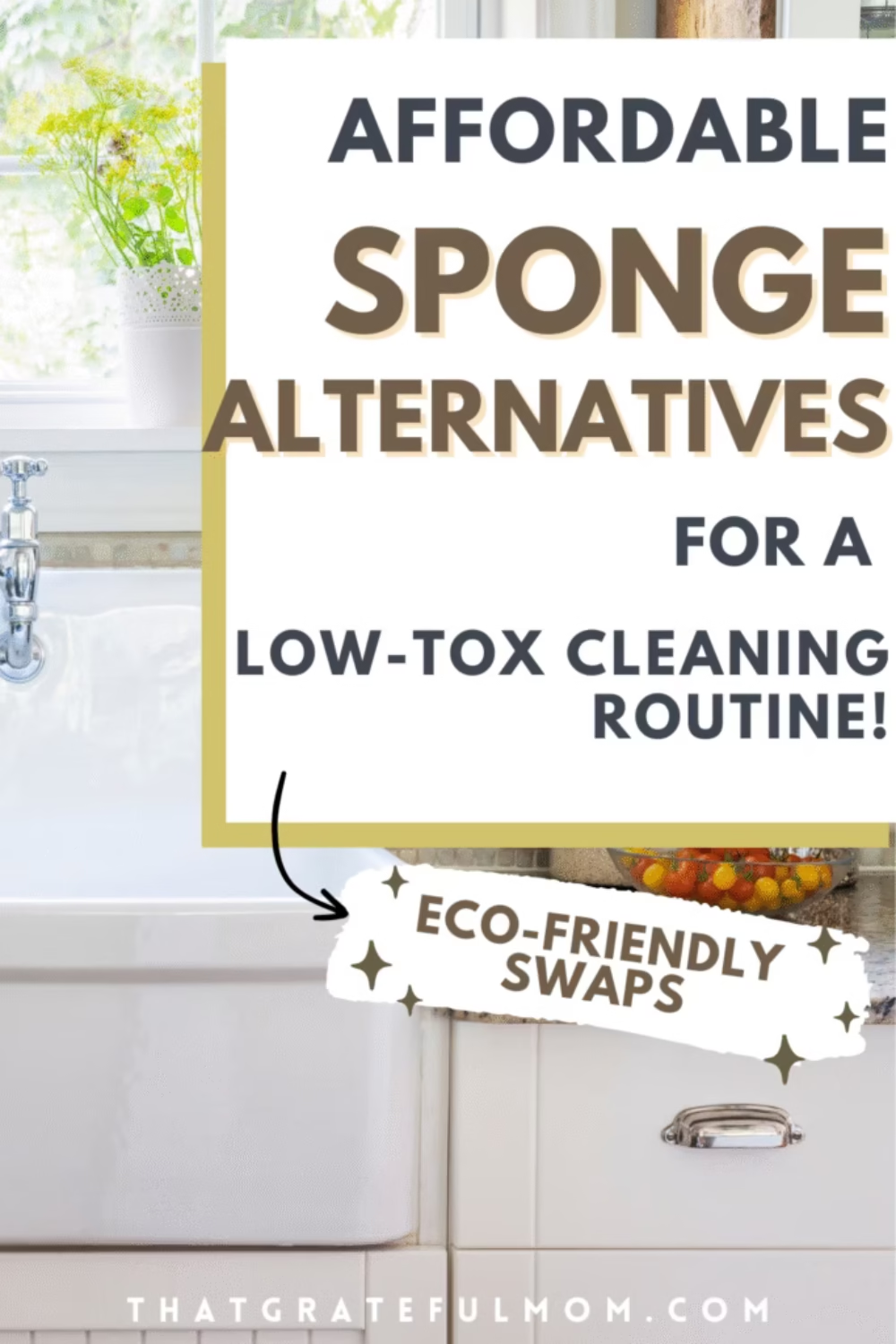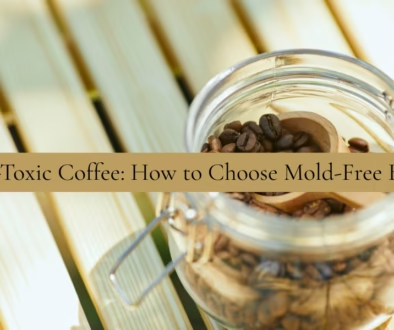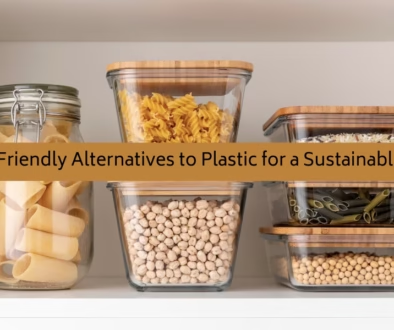The Best Eco-Friendly Dish Sponges for Your Home
If you’re anything like me, your kitchen sees a lot of action. Between meals, snacks, and endless dishes, it sometimes feels like I’m scrubbing constantly. A few years ago, I started looking at how much waste I was creating in my everyday routines, and those bright yellow kitchen sponges were one of the first things to go. Most traditional dish sponges are made from synthetic materials, wrapped in plastic, and tossed in the trash after a few uses. That didn’t sit right with me.
Switching to eco-friendly dish sponges was such a simple change, but it made a huge difference in how I felt about our home and our habits. Today, I’ll walk you through the best sustainable dish sponge alternatives I’ve tried, including how they hold up, which ones I recommend for stubborn food or delicate surfaces, and how they compare to the plastic-based sponges many of us grew up using.
Let’s break it down so you can find the perfect eco swap that fits your home and your cleaning routine.
Why Traditional Sponges Aren’t So Great
Most of the traditional plastic sponges you find at the store are made from polyurethane or other plastic-based materials. They’re not biodegradable, and even worse, they often release microplastics down the drain during washing. These tiny particles travel through water treatment plants and end up in our rivers and oceans, harming wildlife and adding to the global plastic problem.
Another thing? These sponges are often treated with antibacterial chemicals that can cause skin irritation or allergic reactions. And since they’re so difficult to sanitize, they often end up being tossed out quickly, contributing to even more waste.
It has a significant impact for such a small item. However, the good news is that there are better alternatives that work just as well, if not better. There are plenty of natural sponges that do not contain toxic chemicals, offering a great alternative for your cleaning routine. Tossing synthetic sponges is probably easier than you think!
What Makes a Sponge Eco Friendly?
Eco-friendly dish sponges are made from natural or biodegradable materials and break down safely when composted. These sponges often come without plastic packaging, and many are made from natural fibers, like wood pulp, coconut fiber, loofah, or cotton. Some are even reusable or machine washable, which helps reduce waste and save money over time.
When I look for a low-tox sponge, I want it to:
-
Be made from plant-based or biodegradable materials
-
Come in minimal packaging
-
Be durable enough to last a long time
-
Offer recyclable or compostable sponges for less environmental impact
My Favorite Eco-Friendly Dish Sponge Alternatives
After trying quite a few eco-friendly dish sponges over the years, here are the ones that made the cut for our busy kitchen:
Swedish Dishcloths
These cloths are made from cellulose and cotton, making them fully compostable. They feel like a mix between a sponge and a paper towel. They’re super absorbent and work great for wiping down counters, cleaning up spills, or scrubbing lightly dirty dishes. They offer an effective cleaning solution that is completely compostable.
What I love most is that they’re reusable. Simply toss them in the washing machine or dishwasher, and they’re ready to go! One Swedish dishcloth can replace 15 to 20 rolls of paper towels.
Brands I recommend:
Cellulose Sponges
These feel the most like a traditional sponge but are made from natural materials like wood pulp instead of plastic. They hold suds well, rinse easily, and can be sanitized in boiling water or the dishwasher.
Look for ones that don’t have a synthetic scrubber side. Or choose versions that pair cellulose with natural scouring pads made from coconut or walnut shells for plastic-free alternatives.
Brands I recommend:
Loofah Sponges
Loofahs come from a plant in the cucumber family and are naturally abrasive. They’re perfect for scrubbing pots and pans, and stuck-on food, especially when paired with a solid dish soap. They dry out quickly and don’t trap bacteria as easily as regular sponges.
You can use them in the kitchen or for personal care (just not both). When it’s time to toss them, they go straight into the compost bin!
Walnut or Coconut Scrubbers
These are a great swap for scouring pads. They’re tough on dried-on food and stuck messes without scratching stainless steel or non-stick pans. Made from nutshell fibers, they’re completely biodegradable and super effective.
Brand to try: Full Circle’s walnut scrubber sponge is one of my favorites. It pairs a soft cellulose sponge with a scouring pad made from crushed walnut shells.
Sea Sponges
A natural sea sponge is harvested from the ocean and used just like a traditional sponge. They’re soft but strong and work well on delicate surfaces. However, there’s some debate about their sustainability depending on how they’re sourced.
If you choose this route, look for ones that are responsibly harvested and avoid any that are chemically treated.
Wooden Dish Brushes
While not technically a sponge, I think every eco-conscious kitchen needs one. A wooden dish brush with a replaceable head lasts much longer than disposable sponges and gives better scrubbing power.
Pair it with a solid dish soap bar for shiny, clean dishes.
This one has a long handle, which is super convenient for big pots.
This one is made from bamboo wood
Is Scrub Daddy a Good Alternative?
Scrub Daddy sponges are incredibly popular, but here’s the thing: they’re not actually eco-friendly. These sponges are made from synthetic polymers that don’t biodegrade and can’t be composted or recycled in most municipal systems. They also come in plastic packaging and are not the best choice if you’re aiming for a low-tox kitchen. Unfortunately, they’re just as toxic as plastic dish sponges. I know, I know. I love them, too. That said, they are good at removing tough grime and are top-rack dishwasher safe, so many people still use them. If you’re curious about Scrub Daddy sponges and want to see my full review, check out my separate post [here – insert internal link].
Tips for Making Your Sponges Last Longer
For most of us, dishwashing sponges are a household essential. No matter which type you choose, there are ways to extend the life of your eco-friendly sponge:
-
Rinse and wring out completely after each use
-
Allow to dry in open air (avoid dark or damp storage)
-
Sanitize weekly by boiling, microwaving while damp for 1 minute, or running through the dishwasher
-
Rotate your sponges so you’re not overusing just one
When your sponge is finally worn out, make sure to compost it if the materials allow.
How to Build a Sustainable Dishwashing Routine
Creating a sustainable dishwashing routine doesn’t have to feel overwhelming. The goal is to build a rhythm that fits your life while reducing plastic waste and exposure to harsh chemicals.
Start by choosing your tools wisely. Replace plastic-based sponges with eco-friendly alternatives. These alternatives last longer and break down more naturally.
Now, create a simple rhythm. One idea is to do a quick reset after each meal. Rinse and load dishes or hand wash what you used, giving your sink and counters a quick wipe with a reusable cloth. If you have a dishwasher, try running it during your lunch break or before bed. That way, you’re not letting dirty dishes pile up for the next day.
If hand-washing is your go-to, keep a small tub or basin in your sink to soak dried-on dishes. A good soak softens stuck-on food, so you’ll need less scrubbing and save more water.
Make it easier by keeping your cleaning tools where you need them. Mount a sponge holder on the side of the sink. Keep an extra Swedish dishcloth in a drawer so you’re never without one. The fewer obstacles, the more likely you’ll stick with the routine.
Finally, teach your family members to pitch in. Assign tasks by age, and over time, this evolves into a shared responsibility rather than a one-person job.
You don’t need a complicated system. Just a few daily habits can keep your kitchen cleaner with less effort, less plastic, and far fewer disposable products. Start small. Build consistency. And adjust as your needs change.
Final Thoughts
There are a lot of eco friendly dish sponge options out there. It’s okay to try a few and see which ones fit your home best. Whether you go for Swedish dishcloths, coconut scrubbers, or cellulose sponges, any of these are a big step up from the plastic yellow sponges of the past.
Small swaps matter. When you choose biodegradable sponges or reusable dishcloths, you’re helping reduce plastic waste, cut down on synthetic materials in your home, and move one step closer to a cleaner, healthier kitchen.
Want More Low-Tox Cleaning Tips?
You might also like these posts:
This site may contain links to affiliate websites including Amazon. I may receive an affiliate commission for any purchases made by you through Amazon or other potential affiliates and no additional cost to you. Thank you for your support.

